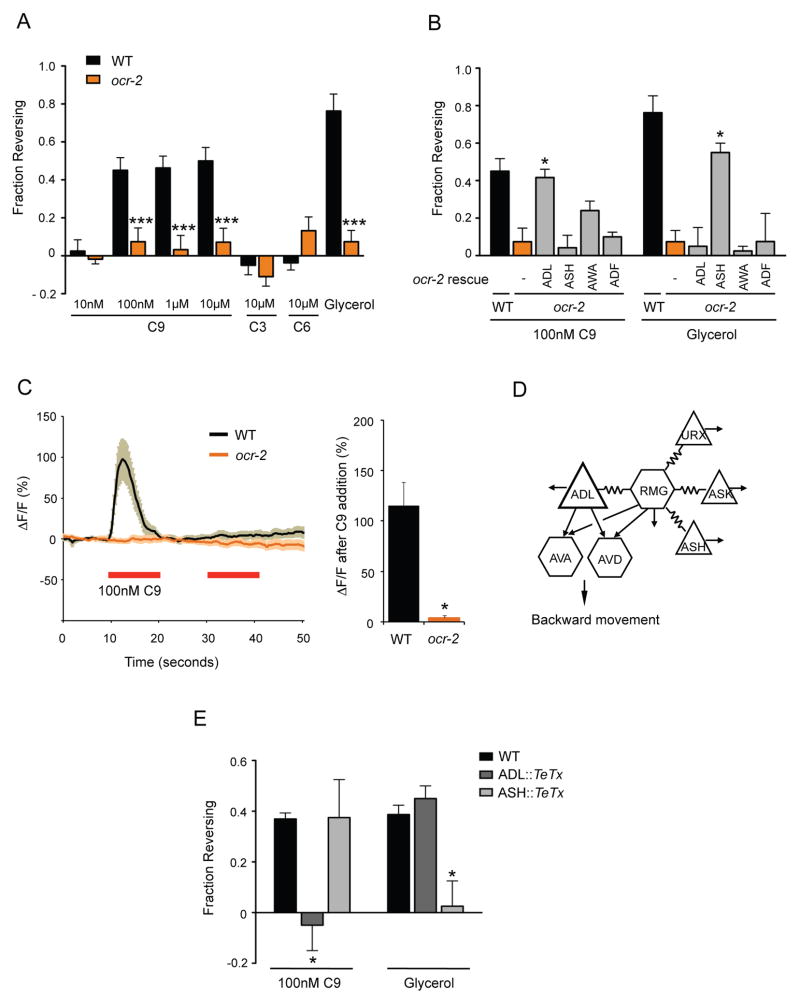Figure 1.
ADL sensory neurons mediate C9 avoidance.
A. Wild-type hermaphrodites avoid C9 in the drop test assay, but ocr-2(ak47) mutants do not. Assays were performed in the absence of food. *** indicates responses different from wild type at P<0.001. n=20–100 animals each. See Figure S1A for assays on food, and Figure S1B for behaviors of osm-9 mutants.
B. ocr-2 acts in ADL to mediate C9 avoidance. Assays were performed in the absence of food. * indicates responses different from ocr-2 at P<0.05. n=20–100 animals each. ocr-2 expression in AWA showed a trend toward rescue, but odr-7 mutants with developmental defects in the AWA neurons (Sengupta et al., 1994) retained the ability to respond to C9 (Figure S1C).
C. C9-induced pheromone responses in ADL. (Left) Intracellular Ca2+ dynamics in GCaMP3-expressing ADL neurons in wild-type and ocr-2(ak47) mutant hermaphrodites upon addition of pulses of 100 nM C9 (red horizontal bars). n≥10 neurons each. Shading around the lines represents SEM. (Right) Average peak percentage changes in fluorescence upon addition of the first pulse of C9. * indicates amplitude different from wild-type at P<0.001. Also see Figure S1D.
D. ADL has chemical synapses onto AVA and AVD command interneurons, and is electrically coupled with the RMG hub-and-spoke circuit (adapted from (White et al., 1986). Triangles represent sensory neurons and hexagons represent interneurons. Additional synapses (not shown) are indicated by arrows.
E. C9 avoidance requires ADL chemical synapses. Avoidance assays in the presence of food. * indicates responses different from wild type at P<0.05. n=20–80 animals each. Error bars in all panels represent standard error of the mean (SEM).

